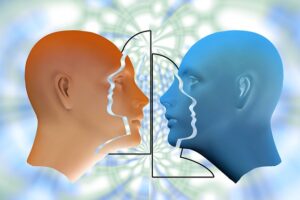https://lumen5.com/user/hmdmahmood55/untitled-video-ciud9/
Movement Disorders, Types, Symptoms and Treatment
Introduction:
1. A person’s ability to plan and coordinate voluntary motions is impaired by a group of neurological conditions referred to as movement disorders. Atypical or involuntary movements, as well as difficulties planning or performing specific actions, can all be brought on by these diseases. Movement issues could be caused by a variety of factors, including genetics, drug side effects, brain injury, or other underlying disorders. Different types of movement disorders exist, each with a unique combination of symptoms and underlying reasons. Here are a few of the more popular varieties:
- Huntington’s disease: This genetic condition is brought on by huntingtin gene mutations specifically in the basal ganglia, it causes the progressive degeneration of brain cells. Uncontrollable jerking or writhing motions (chorea), as well as problems with balance, coordination, and cognitive ability, are symptoms of Huntington’s disease. Tourette syndrome: Tourette syndrome is a neurological illness that causes involuntary, repetitive motions (motor tics) and vocalisations (vocal tics). These tics can range in severity from mild to severe, and they typically start in infancy.
- Restless legs syndrome(RLS): RLS is distinguished by an illogical urge to move the legs, and it commonly comes with uncomfortable sensations like tingling, itching, or a crawling sensation. It is challenging to fall asleep because symptoms typically worsen during rest or inactivity.
- Ataxia: A group of ailments known as ataxia affect balance and coordination. Patients with ataxia usually have trouble controlling their eye movements, walking, speaking, and fine motor abilities. It is possible to contract this syndrome or pass it on to family members, such as stroke, brain tumours, or multiple sclerosis. Movement disorder symptoms might vary depending on the specific disorder, but common symptoms include tremors, muscle rigidity, slow or jerky movements, trouble walking or maintaining balance, and poor coordination. These symptoms may have a major impact on a person’s daily functioning and quality of life. It’s important to keep in mind that both diagnosis and treatment for movement disorders require a thorough evaluation by a medical professional, generally a neurologist or movement disorder specialist. They will consider a variety of factors to determine the precise mobility problem and develop a treatment strategy that is effective in physical examination, take into account the patient’s medical history, and possibly ask for additional testing such as imaging studies or blood tests.
2. What Exactly is Ataxia?
- Ataxia is a neurological condition that affects balance, coordination, and independent movements. A decline in the body’s ability to precisely and smoothly control muscular movements describes it. Ataxia patients usually experience difficulties with their posture, gait, speech, swallowing, and ability to do fine motor tasks. There are several different types of ataxia, including Hereditary ataxias are passed down genetically from one or both parents. Numerous subtypes can be distinguished between them, including Friedreich’s ataxia and spinocerebellar ataxias (SCAs). Hereditary ataxias progress over time, and symptoms frequently get worse, disorders that are acquired are those that result from factors other than genetics. Acquired ataxias can be brought on by brain tumours, multiple sclerosis, head injuries, vitamin deficiencies (particularly vitamin E deficiency), multiple sclerosis, multiple strokes, multiple sclerosis, exposure to certain medications or chemicals, autoimmune diseases, and additional variables. The cerebellum, a region of the brain located close to the back, is crucial for regulating movement and maintaining balance. Problems with the cerebellum or its links to other parts of the nervous system, which lead to jumbled signals and improper muscle control, are the hallmarks of ataxia. Following this disruption, a number of symptoms, including the following, may appear:
- Coordinating problems: Ataxia patients may have difficulty making regulated, precise movements, which makes it challenging for them to carry out actions such as writing, buttoning clothing, or utilising utensils. Ataxia commonly causes unsteadiness, stumbling or awkward walking, and other symptoms. People may struggle to walk straight and may be more likely to trip or wobble.
- Parkinson’s disease: It affects the dopamine producing cells in the substantia nigra, a region of the brain, and is a chronic, progressive Tremors are one of the symptoms of Parkinson’s disease, typically starting in the hands and manifesting as stiffness, bradykinesia (slow motions), clumsiness with one hand, and difficulties with coordination
- .Essential tremor: The neurological disorder known as essential tremor is typified by recurrent, rhythmic trembling or shaking, typically in the hands or arms. Unlike Parkinson’s disease related tremors, essential tremors occur during voluntary movements and frequently worsen in response to stress or intentional actions.
- Dystonia: Dystonia is a movement disease characterised by recurrent muscle spasms that cause repetitive or twisting movements, abnormal postures, or both. There are two types of dystonia: focal dystonia, which affects a specific portion of the body, and generalised dystonia, which affects the entire
- Difficulties Speaking and Swallowing: The muscles that create speech can be affected by ataxia, which can result in slurred or sluggish speech. Having trouble swallowing, or dysphagia is another reason.
- Impaired Eye Movements: Some types of ataxia can make it difficult to move the eyes smoothly, leading to nystagmus, difficulty tracking objects, or problems with coordination.
- Tremors: Some people do not suffer tremors, despite the fact that they are more usually associated with other movement disorders, such as Parkinson’s disease. Some forms of ataxia can also cause tremors or shaking motions. according to the basic reasonAtaxia’s severity and progression may differ significantly depending on many factors and situations. The symptoms may persist for a long period in some circumstances while progressively getting worsening in others. In order to manage ataxia, it is necessary to reduce symptoms, improve quality of life, and take care of any underlying reasons.
- Treatment options include the use of assistive technology to improve movement, speech therapy for issues with speech, physical therapy to improve balance and coordination, and medicines to address underlying illnesses or specific symptoms. Genetic counselling may be recommended for people with inherited ataxias to find out how likely it is that their children may also have the condition. Given that ataxia can have a major impact on everyday functioning and that persons with ataxia have a high quality of life Family and friends, professionals, and support networks are crucial.
3. Movement Disorder that Leads to Periods of Extreme Fatigue A movement illness called Myalgic Encephalomyelitis/Chronic Fatigue Syndrome (ME/CFS) can make simple tasks like talking, walking, bending, or driving hard over time or on a regular basis. Although the main symptom of ME/CFS is extreme weariness, it is also considered to be a complicated and multisystemic disorder rather than merely a movement issue. However, exertion from speaking, moving, bending, or travelling could exacerbate ME/CFS fatigue. PEM, or postexercise malaise, which is a hallmark feature of ME/CFS, is one of the extra symptoms that people with ME/CFS may encounter. It speaks of an extreme symptom aggravation, such as symptoms following physical or mental effort, malaise, discomfort, fatigue, and difficulties with thinking. The effort can be as simple as daily tasks or mental workouts. Cognitive Impairment: Many ME/CFS sufferers experience cognitive problems, also known as “brain fog.”Concentration, memory, word retrieval, and information processing issues can all be signs of this. Orthostatic Intolerance: The inability to maintain blood pressure and heart rate after rising from a seated position is referred to as orthostatic intolerance. This may cause fainting, lightheadedness, and vertigo.
- Muscle and Joint Pain: Much to fibromyalgia, widespread muscle and joint pain is a common symptom of ME/CFS. Numerous ME/CFS patients experience abnormal sleep patterns, restless sleep, or insomnia, which can make them feel more worn out. Given that ME/CFS is a complex illness with an unclear exact aetiology, various Genetics, immune system dysfunction, aberrant hormone levels, and environmental stressors are likely contributing factors. For ME/CFS to be diagnosed, certain symptoms must be present, and any underlying medical conditions that might be causing those symptoms must be ruled out. Since ME/CFS does not yet have a known cure, efforts are made to manage symptoms and improve quality of life. To do this, a mix of pacing and energy management techniques, cognitive behavioural therapy (CBT), light physical therapy or exercise, medications to treat specific symptoms, and lifestyle changes may be employed. People with ME/CFS must work closely with medical specialists to develop an individualised treatment plan that addresses their specific needs, such as a primary care physician or a specialist knowledgeable about the condition, their distinctive signs and needs
4. Effects of Movement Disorder:
The precise type of movement disorder, its severity, and individual characteristics can all affect how a person experiences movement disorder side effects. These typical negative consequences are possible:
- Functional Impairment: People with movement issues could find it challenging to do routine basic tasks. The motor symptoms of movement disorders, such as tremors, muscle rigidity, and reduced coordination, can make it challenging to write, eat, dress, or walk. Pain and discomfort can be brought on by a variety of movement problems, such as dystonia and muscular spasms. These emotions could be constant or occasional, specific to one part of the body or more widespread.
- Fatigue physically: Movement irregularities may really demanding. Compensating for motor impairments, maintaining balance, or performing motions might result in an increase in unintentional exhaustion and a decrease in general energy levels.
- Impact on the Mind and Emotions: Having a mobility issue can have negative effects on the mind and emotions. Anger, embarrassment, anxiety, depression symptoms, or social isolation could follow. The chronic nature of movement disorders and how they influence day-to-day life can be very tough to deal with.
- Sleep Disturbances: Movement problems can disrupt sleep, making it difficult to get to sleep, stay asleep, or get a good night’s rest.RLS, for instance, might result in uncomfortable leg sensations that make it challenging to find sleeping positions that are comfortable.
- Cognitive Impairment: Cognitive processes may be hampered by several movement disorders.
- MedicationAdverse Effects: Medication is often used to treat movement disorders, however, these treatments can have side effects of their own. Problems with memory, attention, and executive functioning may be among these negative effects. Common side effects include changes in blood pressure, diarrhoea, nausea, and drowsiness.
- Effects on Social Life and Relationships: Interpersonal connections and relationships can be impacted by movement disorders. The evident symptoms or movement limitations may make it challenging to engage in social activities, result in social stigma, or damage personal relationships. It’s important to keep in mind that the specific side effects can vary based on the type of mobility problem. These side effects will vary from person to person, both in terms of harshness and effect. It is advisable to consult a medical professional who can perform a full evaluation and give a specialised treatment plan to manage the movement issue and any associated side effects, such as a movement disorder specialist or neurologist. 5. Movement Disorders Treatment How a movement problem is treated and managed will depend on the specifics of the problem’s shape as well as its underlying cause. While there is currently no known treatment for the majority of movement disorders, there are a number of approaches that can help control symptoms, improve quality of life, and slow the spread of the condition. Here are a few common strategies:
- Disclaimer: The contents of this article are intended to raise awareness about common health issues and should not be viewed as sound medical advice for your specific condition. You should always consult with a licensed medical practitioner prior to following any suggestions outlined in this article or adopting any treatment protocol based on the contents of this article.
- Contd


